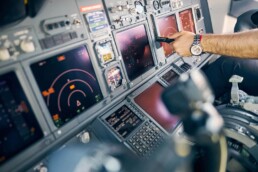Understanding Hemisphere GNSS
Hemisphere GNSS is renowned for its cutting-edge positioning technologies, offering solutions designed to meet the demanding needs of industries like marine and aerospace. Their focus on precision, reliability, and innovation sets them apart as a leader in GNSS technology. Whether it’s enabling accurate navigation across open waters or ensuring dependable flight path management, Hemisphere GNSS products have become an essential tool for professionals who rely on precise positioning.
The company’s commitment to continuous development is evident in its range of advanced solutions tailored for specific applications. By integrating robust features like multi-frequency support, advanced correction technologies, and durable designs, Hemisphere GNSS ensures that their products perform reliably even in the most challenging environments. This makes them a trusted partner for organizations that cannot afford to compromise on accuracy or performance.
Importance of GNSS in Marine Applications
GNSS technology is a cornerstone of modern marine operations, offering the accuracy and reliability needed to navigate safely and efficiently. From fishing vessels to large cargo ships, GNSS enables precise route planning, reducing fuel consumption and ensuring timely arrivals at ports. Its role extends beyond navigation, supporting applications like dredging, offshore platform positioning, and search-and-rescue missions.
In marine environments, the ability to maintain accurate positioning is crucial. Harsh weather conditions, water currents, and other environmental factors can make navigation challenging, but GNSS systems mitigate these risks by providing consistent and reliable data. For professionals in the marine industry, this technology has become indispensable, helping to improve safety standards and streamline operations across a range of activities.
Hemisphere GNSS Solutions for Marine Industry
Hemisphere GNSS offers a suite of products specifically designed to meet the unique challenges of marine operations. The Vector V200 GNSS Compass is a standout solution, providing precise heading and positioning data essential for applications like navigation, dredging, and offshore construction. This device integrates advanced technologies like multipath mitigation, ensuring accurate performance even in areas with signal reflections caused by water surfaces or nearby structures..
Case Studies: Marine Applications
The effectiveness of Hemisphere GNSS solutions in marine settings is best demonstrated through real-world applications. In one project, a dredging company leveraged the Vector V200 to maintain precise positioning of their equipment during operations. The device’s ability to provide accurate heading data significantly improved efficiency, reducing project timelines and material waste.
Another example involves a fleet of cargo vessels utilizing Hemisphere’s Atlas satellite-based Correction Service for long-distance navigation. The enhanced accuracy allowed captains to optimize routes, cutting down on fuel costs and ensuring punctual deliveries. These success stories highlight how Hemisphere GNSS products contribute to safer and more efficient marine operations, solidifying their reputation as an industry leader.
Significance of GNSS in Aerospace Applications
In the aerospace industry, precision and reliability are paramount. GNSS technology has revolutionized how aircraft navigate, providing accurate positioning data essential for safe and efficient operations. From managing complex flight paths to enhancing situational awareness, GNSS systems play a critical role in ensuring the safety of passengers, crew, and cargo.
Beyond navigation, GNSS supports applications like autonomous drone operations, aerial surveying, and real-time aircraft tracking. These capabilities are vital for maintaining efficiency in both commercial and military aerospace operations. With the added challenges of varying altitudes, speeds, and environmental conditions, GNSS technology provides the precision and stability needed to meet these demands consistently.
Significance of GNSS in Aerospace Applications
In the aerospace industry, precision and reliability are paramount. GNSS technology has revolutionized how aircraft navigate, providing accurate positioning data essential for safe and efficient operations. From managing complex flight paths to enhancing situational awareness, GNSS systems play a critical role in ensuring the safety of passengers, crew, and cargo.
Beyond navigation, GNSS supports applications like autonomous drone operations, aerial surveying, and real-time aircraft tracking. These capabilities are vital for maintaining efficiency in both commercial and military aerospace operations. With the added challenges of varying altitudes, speeds, and environmental conditions, GNSS technology provides the precision and stability needed to meet these demands consistently.
Hemisphere GNSS Offerings for Aerospace Sector
Hemisphere GNSS provides advanced solutions tailored to meet the unique requirements of the aerospace industry. The Phantom 40 OEM module is a key product designed for high-precision aerospace applications. Featuring aRTK™ and Tracer™ technology, this module ensures continuous operation even in areas with weak satellite signals.
For aerial surveying and unmanned aerial vehicles (UAVs), Hemisphere’s OEM boards deliver centimeter-level accuracy and seamless integration with other systems. These technologies enable precise flight control and positioning, which are crucial for data-intensive applications like mapping and surveillance. By offering products with superior performance and flexibility, Hemisphere GNSS ensures that aerospace professionals have the tools they need to achieve unparalleled accuracy and operational efficiency.
Case Studies: Aerospace Applications
The impact of Hemisphere GNSS solutions in the aerospace sector is evident through their success in real-world applications. One notable example involves the use of the Phantom 40 module in UAVs designed for large-scale aerial mapping. The module’s high precision and reliable signal tracking allowed for the creation of detailed topographic maps, even in challenging environments with limited satellite visibility.
Another case highlights the integration of Hemisphere GNSS systems in commercial aircraft for real-time flight path optimization. By leveraging accurate positioning data, airlines improved fuel efficiency and reduced operational costs while enhancing passenger safety. These case studies demonstrate how Hemisphere GNSS technologies are shaping the future of aerospace operations, providing consistent results and boosting overall efficiency.
Future Trends in GNSS for Marine and Aerospace
As technology evolves, GNSS applications in marine and aerospace industries are set to expand. The adoption of multi-frequency and multi-constellation GNSS systems is becoming a standard, ensuring enhanced accuracy and reliability across diverse environments. These advancements are particularly important for operations in signal-challenged areas, such as deep-sea exploration and high-altitude aviation.
Another emerging trend is the integration of GNSS with Artificial Intelligence (AI) and Internet of Things (IoT) platforms. This fusion enables predictive analytics, autonomous decision-making, and smarter operational workflows in both sectors. Innovations like anti-jamming technology and improved correction services are also expected to bolster GNSS reliability, ensuring uninterrupted performance in critical applications.
By staying ahead of these trends, Hemisphere GNSS continues to provide cutting-edge solutions that meet the ever-changing demands of marine and aerospace professionals, ensuring these industries remain on the forefront of innovation.

